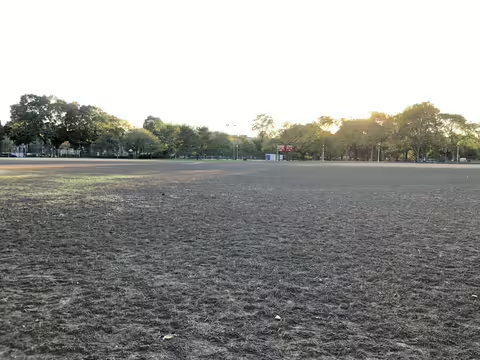URBANA, Ill. – Hundreds of dead and dying grubs littered the dirt Chicago sports field once covered in grass. Nancy Kreith, University of Illinois Extension horticulture educator surveyed the damage. With the level of damage, the best option for the park district was to start over, reseed or sod the field.
Homeowners should be aware of the possible damage grubs may cause turf and best treatment methods.
"Timing of application comes into play depending on when the beetles deposit their eggs," says Kreith.
Lawn grubs are c-shaped and feed on the roots and organic matter in the soil. Lawns can handle some grubs, but when they exceed ten grubs per square foot, remedy is needed.
"Dig and lift a square foot section of your lawn and count the number of grubs below the surface" Kreith says. "Check several areas of the lawn, focusing on the damaged areas."
A damaged lawn is not always caused by grubs. Damage can occur from drought stress, soil, compaction, flooding, disease, and other pests. When meeting the grub threshold, there are insecticides and organic control options.
"Timing is everything when treating grubs," Kreith says. "The best time to treat grubs are while they are young and actively feeding." Typically, in northern Illinois adult beetles are laying eggs from June to early July.
"A prime target for egg laying beetles is turf in a sunny location with moist soils," says Kreith. "Eggs will hatch into grubs, called larva, and begin to feed by early July. It is best to treat around this time."
Insecticide, such as, chlorantraniliprole trichlorfon and imidacloprid can be applied to prevent large-scale damage when grubs are first noticed. If adult beetles are present in lawns, such as in an irrigated lawn, imidacloprid can be applied prior to noting damage, usually around late July.
Lawns should also be watered prior to application and insecticides should be watered into the soil for best results. When using insecticides always carefully read and follow the label.
There are also natural ways to control grubs. Organic choices include Heterorhabditis bacteriophora (Hb) nematodes that controls all types of grubs, or milky spore that only controls Japanese beetle grubs.
"Since both methods are considered biological controls be sure to follow the instructions for best results," Kreith says.
Hb nematodes should be released early in the day or evening, Kreith says, because there is potential for them to dry up in the sunlight. They favor warm soils and need moisture during establishment.
Milky spore also responds well to warm soils and is activated by the grub itself, so it is not used as a preventative. Milky spore varies in its efficacy due to soil conditions, product variability, and grub resistance. It can take a few years for the milky spore bacteria to build up in the soil.
When significant grub damaged has occurred, renovation work should be completed in early fall. Rake away debris, water the soil as some roots may recuperate, and top dress with compost or soil to level the ground.
"Sparse areas can be re-seeded; however, the target date for lawn renovation tasks in northern Illinois is between Aug. 15 and Sept. 15 to ensure fall establishment before winter," Kreith says.
Healthy lawns will tolerate some grub feeding.
"Following best cultural practices in lawn care programs will keep your grass growing healthy," Kreith says. Test your soil every three years to determine fertilizer and soil amendment recommendations, mow at a higher height of 3 inches in order for the turf to establish deeper roots, and over-seed bare spots in the fall.
For a more thorough understanding of lawn care, visit Illinois Extension’s lawn care website.
SOURCE: Nancy Kreith, Illinois Extension Horticulture Educator
ABOUT EXTENSION: Illinois Extension leads public outreach for University of Illinois by translating research into action plans that allow Illinois families, businesses, and community leaders to solve problems, make informed decisions, and adapt to changes and opportunities.
